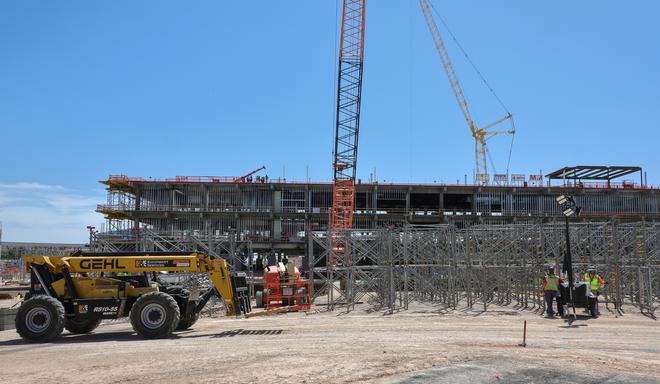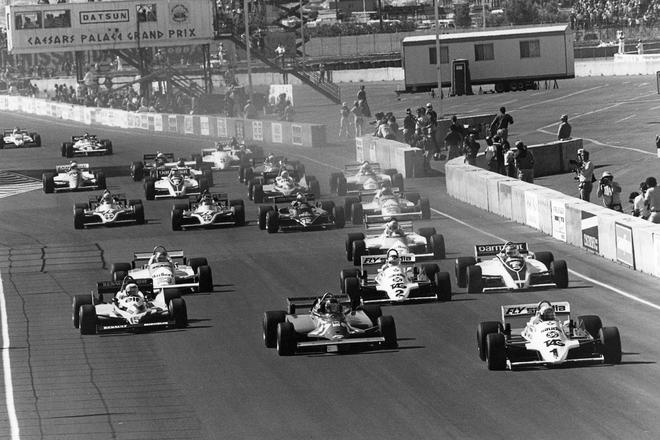

Since its beginning, Formula One has been seen mainly as a European sport, with most races being staged on the continent. Slowly, over time, the sport has expanded across the globe, with races in Asia and the Arabian Peninsula popping up.
However, one market F1 has struggled to break into has been the USA. It has had multiple starts in the world’s largest economy, but none of the venues has become a fixture on the calendar.
However, over the last few years, F1 has found its stride, with its popularity booming stateside thanks to the Netflix documentary series, ‘Drive to Survive’.
Blessing in disguise
The series offers viewers a slice of what happens behind the scenes. It really took off during its second season, which dropped towards the end of February 2020 when people were confined to their homes because of the pandemic. It was a blessing in disguise for F1, which found a sizeable captive audience with time to kill.
The series was one of the key steps taken by the US-based Liberty Media, F1’s commercial rights owner since 2016-17, to broaden the sport’s appeal and make it more accessible.
F1’s new owner has expressed a preference for holding races in some of the world’s most happening cities or what they term ‘Destination Cities’. More importantly, there’s a push for more street circuits, which take racing to the people, rather than purpose-built venues on the outskirts of cities.
In the US, Austin (Texas) has staged a race since 2012, but the quest for taking the sport to the people and capitalising on the growing interest in the wealthiest country on earth meant another race was added in Miami last year. And this weekend, F1 will make its biggest gamble in the city of casinos, hosting a third race in the US at Las Vegas.
Unlike other races around the world, where local promoters pay eye-watering sums of money for a licence to host the race, F1 is promoting the Las Vegas Grand Prix itself and spending nearly $500 million.
The layout is a mix of permanent track and existing streets, with cars zooming along the Strip — the iconic part of town home to the famous hotels, resorts and casinos.
F1 spent almost $250 million to buy land to construct the pit and paddock complex, which will be a permanent structure. At 6.1 km, it is one of the longest circuits on the calendar and will be a challenging high-speed track with the walls not far off.
Will it deliver?
While it is desirable and less capital-intensive to have street courses, the natural limitations of the geography can produce dull racing. So it will be interesting to see whether Las Vegas delivers on the promise of being one of the season’s fastest tracks.
This event will be the second attempt by the sport to get a race going in Sin City. Four decades ago, F1 had the Caesars Palace Grand Prix, a race around the parking lot of the Caesars Palace Hotel, and the track was one of the dullest on the calendar. The desert heat did not help, making it physically exhausting for the drivers.
Fortunately, this time around, F1 will be racing at night, which should make for great television as cars speed past the bright neon-lit buildings on the Strip. While the heat won’t be a problem, the flipside is that the extremely low temperatures at this time of the year could pose an engineering challenge for teams and drivers.
F1 tyres and brakes need a minimum temperature to operate at their absolute best. The risk around a high-speed circuit with walls and minimal run-off areas is that the tyres might not offer the optimum grip if they are not warm enough, especially on a newly laid piece of tarmac where the grip levels are unknown. Similarly, the carbon brakes on these cars don’t work well in low-temperature settings.
While there is palpable excitement around the event, F1 will need to tread with caution. Going overboard for the sake of the show, without respecting the heritage and tradition of the sport, could prove counterproductive.
For example, the Vegas race will start at 10 p.m. on Saturday (local time) and could end in the wee hours of Sunday — a departure from the traditional Sunday afternoon or evening start for the rest of the calendar. It will be the first time F1 will race on Saturday in four decades, with practice sessions on Thursday and qualifying at midnight on Friday.
Precarious balancing act
The schedule and timings show the precarious balancing act F1 is trying to manage. Qualifying and the race will be live early in the morning in Europe, where the sport’s core audience lies, while it will be well past midnight on the US East Coast — hardly primetime viewing in either territory.
Nonetheless, the event is expected to attract high-flyers, elites and A-list celebrities. It could end up being one of the most glamorous races on the calendar — say, a Monaco Grand Prix on steroids, with American grandeur and over-the-top pomp and splendour.
But at the same time, there is also the risk of pricing out the hardcore fan, with the racing itself becoming secondary to the spectacle surrounding the event.
The race has some of the most expensive ticket prices. Three-day general admission standing-only tickets cost $500, and the cheapest grandstand tickets could set you back by more than $1,500. For the moneyed, the more premium tickets, inclusive of stay at the iconic resorts, run into the tens and even hundreds of thousands of dollars.
While the US is the largest and most affluent consumer market, F1 needs to be careful not to overdo things by adding races at the cost of some of the traditional tracks in the European heartland. Yes, there is a buzz in the US currently, but in a country where IndyCar and NASCAR rule the roost, it could fizzle out quickly, as it has in the past. F1 can’t afford to put all its eggs in one basket.
Though it might seem like an experimental approach in which F1 is underwriting the risks, how the event unfolds could determine the sport’s direction in the coming years. A successful event could act as a template for future races in other big cities. What happens in Vegas might not stay in Vegas!







